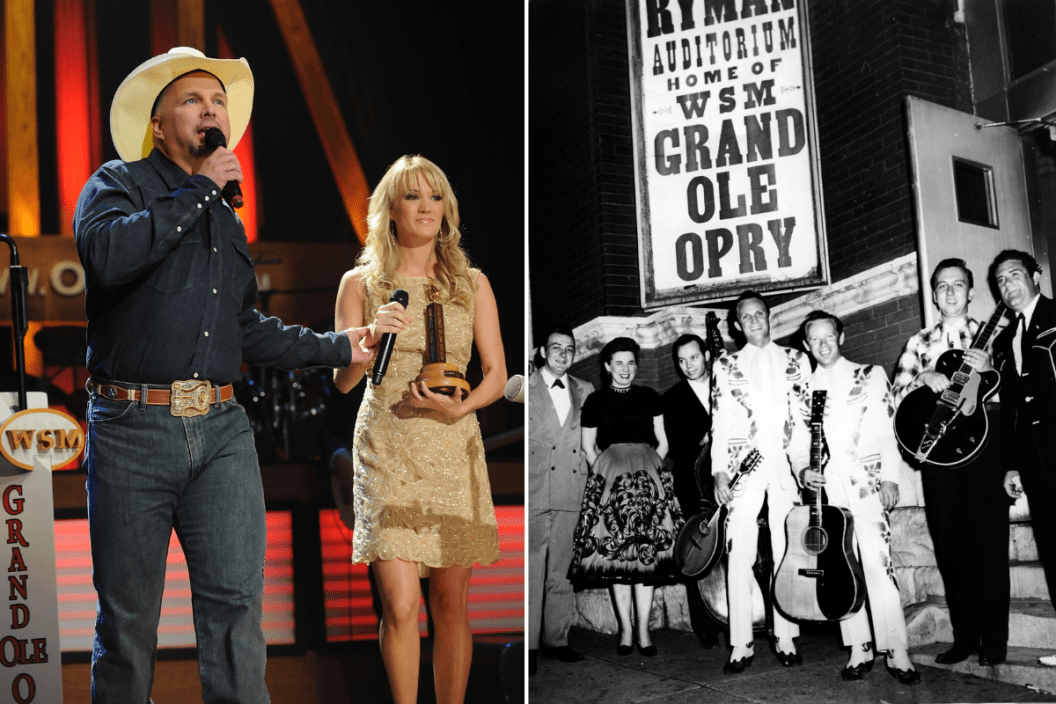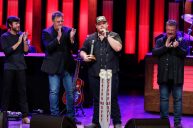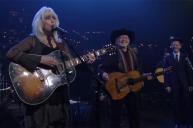Stepping inside the Grand Ole Opry House's hallowed circle —a former part of the original Ryman Auditorium flooring— will always be special for country artists, be it new faces gracing the show's famous stage for the first time or veterans who've spent decades entertaining country fans in radio land. Likewise, sitting in the audience for a live show or scoping out the artists' dressing rooms during a backstage tour will remain on the bucket lists of music lovers worldwide.
Videos by Wide Open Country
Read on for answers to common questions about the Opry that'll add context about why the show that made country music famous holds such high regard in the minds and hearts of artists and fans.
When Did the Grand Ole Opry Start?
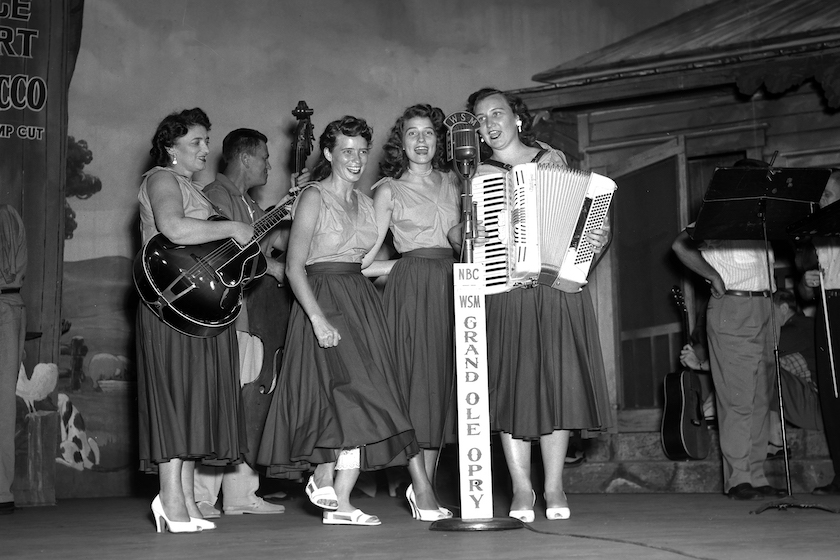
Bob Grannis/Getty Images
Launched on Nov. 28, 1925 by longtime announcer and WSM AM program director George D. Hay, the Grand Ole Opry went on transform Nashville into Music City. It's America's longest-running radio show (second globally to the BBC's Shipping Forecast) and continues to showcase a variety of talents each Saturday night (and other nights during the week), from comedians and square dancers to a wide range of musical acts.
The Grand Ole Opry and the rival WLS-AM Barn Dance in Chicago played pivotal roles in the early spread of country music by broadcasting the genre directly into America's living rooms. The Opry can still be heard on WSM, as well as Channel 132 on Sirius Satellite Radio and via the show's website. In addition, the show currently airs on the Opry's television home, Circle.
Where is the Grand Ole Opry Located?
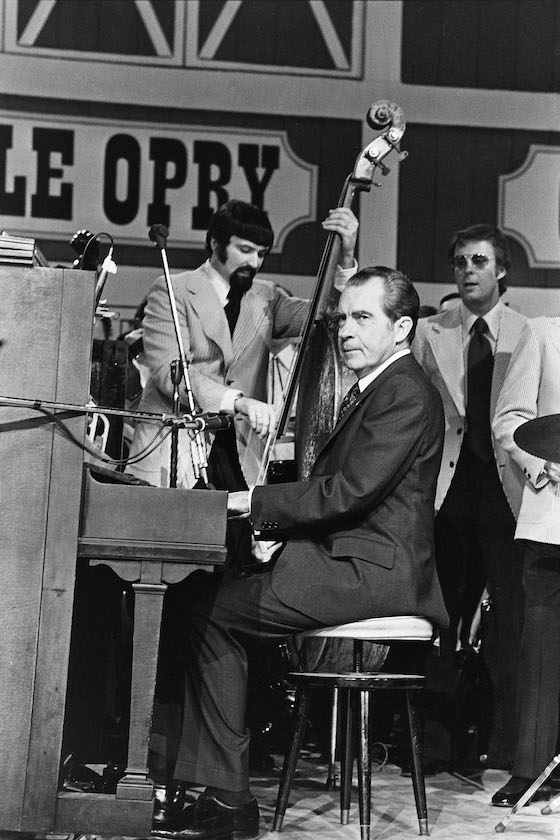
David Hume Kennerly/Getty Images
In 1972, the Opryland USA theme park opened on farmland previously owned by local sausage manufacturer Rudy's Farm. Two years later, the Opry relocated to the property's band-new Grand Ole Opry House.
The Grand Ole Opry House opened its doors on March 16, 1974 with a broadcast featuring a special guest playing a few songs on piano: President Richard Nixon. It remains the show's permanent home, outlasting Opryland USA, which closed in 1997.
Past Homes of the Grand Ole Opry
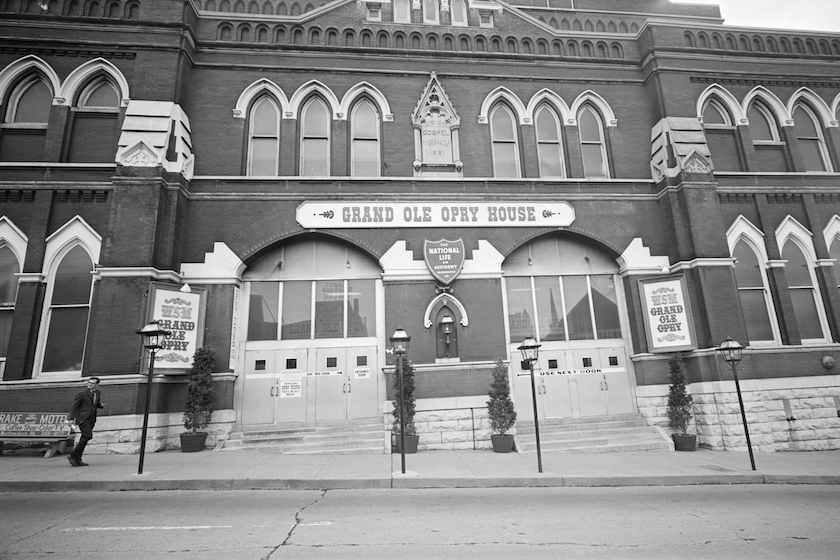
Bettmann / Contributor
Even the most casual country music fans associate the Ryman Auditorium in downtown Nashville with some of the Opry's biggest superstars and most historic moments. However, it wasn't the original home of the show.
From its Nov. 1925 debut through Oct. 1934, the National Life and Accident Insurance Company's main office hosted its nascent radio station (WSM stands for the company's slogan, We Shield Millions) and what became its flagship show— then called the WSM Barn Dance. The Opry Entertainment Group and WSM Radio are among the properties currently owned by Ryman Hospitality Properties, Inc.
After public demand to see old favorites and new stars on the Opry stage outgrew the 500-seat expansion to WSM's Studio C, the program jumped between several homes. First came the Hillsboro Theater (now independent film destination the Belcourt Theatre) from Oct. 1934 to June 1936. The Dixie Tabernacle, a space in East Nashville built for Christian camp meetings, hosted the show from June 1936 to July 1939. Between June 1939 and June 1943, Opry shows took place in its fanciest home to date, the War Memorial Auditorium.
In June 1943, the Opry's widespread acclaim necessitated a move to the 2,300 seat Ryman Auditorium. The historic venue was in ill repair by the time the Opry House opened in 1974, forcing the Mother Church of Country Music to cease operations until the 1990s. The beloved music venue remains one of Tennessee's top tourist attractions, in part because it's conveniently located off Lower Broadway and is walking distance from the Country Music Hall of Fame and Museum.
Who All is an Opry Member?
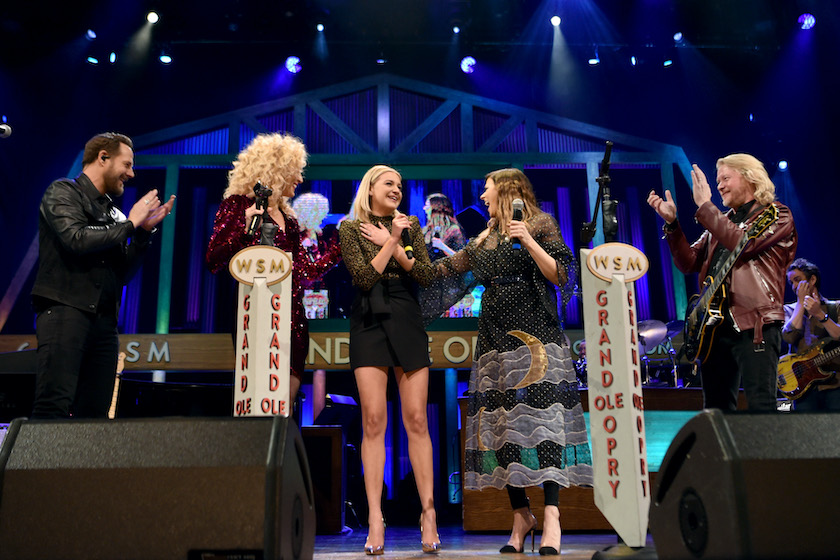
John Shearer/Getty Images
As of June 20, 2022, there are 68 living, standing members of the Grand Ole Opry cast. The roster ranges from Country Music Hall of Fame members (Bill Anderson, Vince Gill, Ricky Skaggs) to the guiding voices of modern bluegrass (Rhonda Vincent) and mainstream country (Carrie Underwood, Brad Paisley).
Counting those who've died, there's been 219 individuals or acts to join the cast since the tradition began in 1925 with Uncle Jimmy Thompson.
How are New Opry Members Selected?
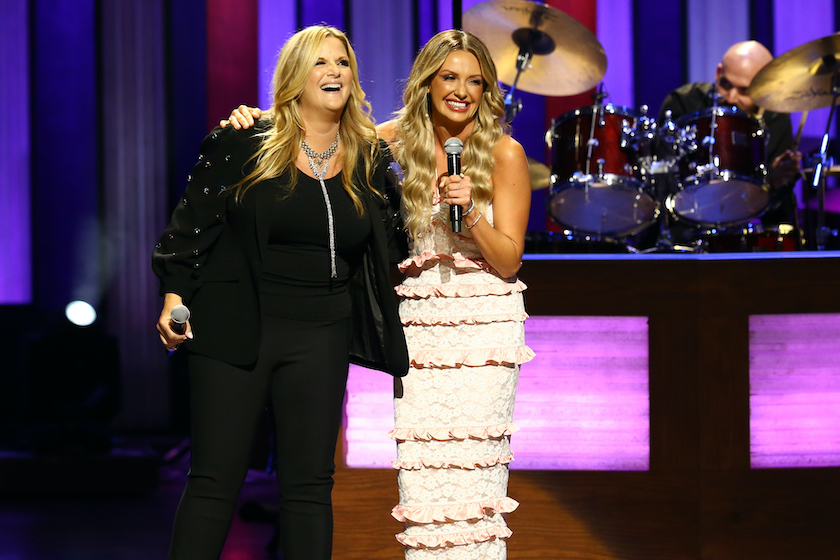
Terry Wyatt/Getty Images
Guidelines for who gets to be an Opry member have always been loose, with the show's website admitting that "there's no magic formula or secret code that grants access to one of the most coveted invitations in all of music."
Ultimately, it's up to the show's management. Being liked and respected by the Opry brass and being a regular Opry performer known to sell tickets or attract viewership and listenership should do the trick for rising stars, current heavy-hitters and legends yet to receive an invite.
In recent years, invites to join the Opry cast have become public displays of musical affection that are heartwarming and, in many cases, hilarious. For instance, Little Jimmy Dickens climbed a step stool in 2003 to invite Trace Adkins eye to eye. In 2021, what Pearce thought was a video shoot to discuss her experience working at Dollywood was an elaborate setup for Dolly Parton herself to pop a coveted question.
Are Opry Memberships Permanent?
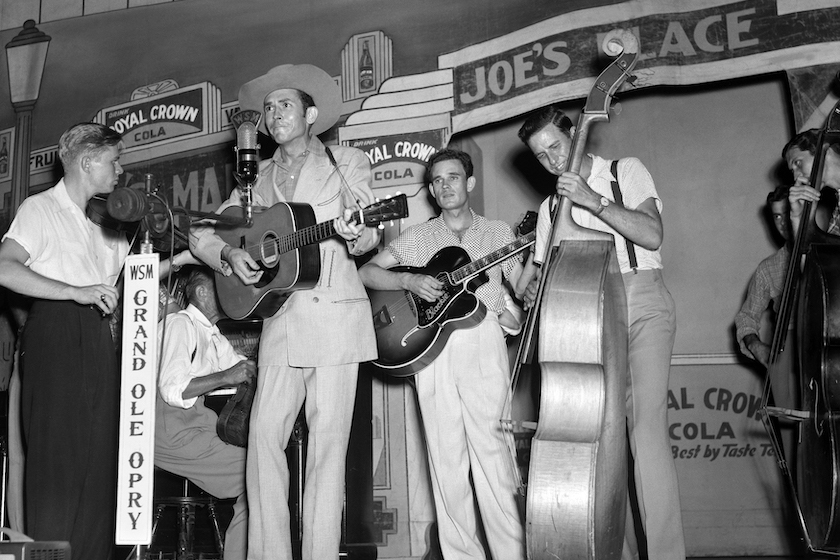
Bob Grannis/Getty Images
A short list of Opry members were removed over the years from the cast, be it to pursue other interests (Carl Smith) or because of missed shows (Hank Williams), bad behavior (a three-year absence for Johnny Cash) or an inability to make the required number of Opry dates due to touring demands (Willie Nelson).
The appearance requirement changed over time, going from the strict 26 shows per year rule in 1963 to 20 the following year. The minimum dropped in 2000 to 12. The expectation to frequently perform on Opry broadcasts explains why such artists operating outside of Nashville as George Strait and Merle Haggard never made sense as members.
